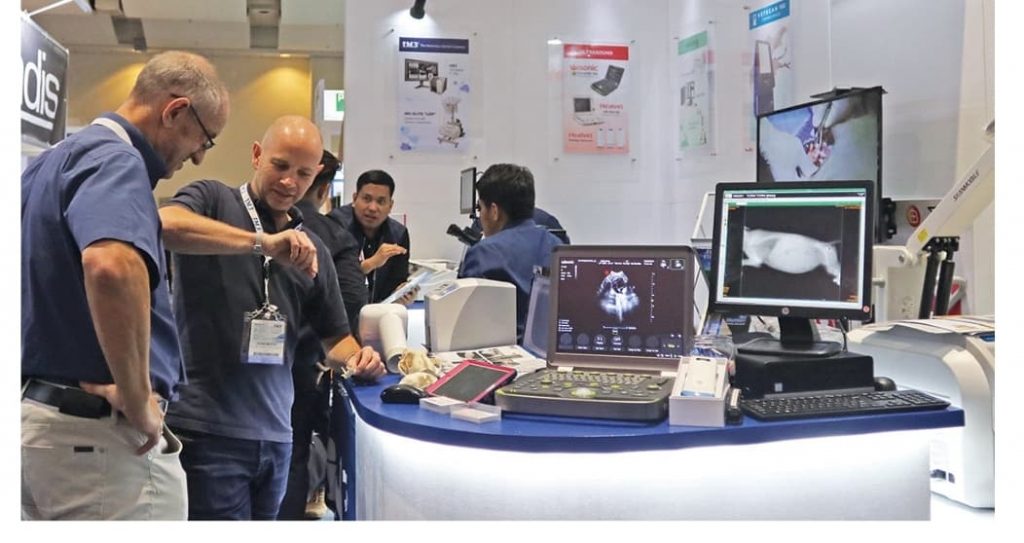The Philippine Animal Hospital Association (PAHA) invited hundreds of veterinarians from all over the country for its three-day 25th annual conference at the SMX Convention Center, Mall of Asia Complex in Pasay City.
Established in 1978, PAHA continues to unite veterinarians towards a common goal: to build rapport among veterinary hospitals, clinics, and diagnostic laboratories, and to continuously raise the standards of professional veterinary care.
The conference also serves as an avenue for animal healthcare professionals to learn more about modern animal care practices and exchange ideas on general veterinary management and policies.
Higher standard of vet care

Several key speakers were invited to share their expertise.
Dr. Susan Little, a member of the American Board of Veterinary Practitioners Certified in Feline Practice, focused on feline medicine; Dr. Joelle Kirpensteijn, a chief professional veterinary officer, talked about being a veterinary surgeon. Dr. Anthony Caiafa shared his thoughts on dental radiology, while Dr. Baris Sahan talked about blood circulation in dogs and cats.
Little and Kirpensteijn took turns explaining different concepts of vet care among felines, including how to manage cats with urethral obstruction, improving the safety of anesthesia for cats, and how to care for anorexic cats.
They also talked about treating constipation in cats and shared top five surgery tips for cats, as well as debunked some of the most common feline nutrition myths.
Meanwhile, Sahan expounded on common leukogram patterns, and Caiafa further explained the errors and complications seen in small animal dental procedures.
Feline care
Cats are known to be naturally independent, but they do need proper care and guidance. They can be vulnerable to diseases, such as lower urinary tract diseases, illnesses that cause vomiting, fleas, tapeworms, and even eye problems.
Anesthetic safety
Treating cats with serious conditions may involve surgical procedures and the use of anesthesia, which Little and Kirpensteijn discussed.
Like any medical procedure, anesthesia has its risks. According to Dr. Heidi Shafford, approximately one in 1,000 healthy cats and one in 2,000 healthy dogs die under anesthesia every year. Even though the rate is very low, professionals reiterated the need to continuously improve their service and prioritize safety precautions.
Diet and Nutrition

Anorexia, a decrease or loss of appetite, is also one of the most common problems among felines. Little claimed that simple anorexia should not be taken lightly as it may signal something serious and could contribute to a far more serious consequence.
The speakers also corrected some of the most common beliefs when it came to feline nutrition. Some humans believe that dry food is best for cats, but there is evidence that this might be a source of chronic health issues. Dr. Little said water is a vital part of any being’s diet, so moisture-rich foods suit them best because they maintain the integrity of cellular membranes.
Another common misconception is that diet does not affect cat’s stress, aggression or hyperactivity. A feline’s behavior is largely affected by a range of ingredients in their diet. Cats are known to be very susceptible to behavior problems when their food lacks essential amino acids and micronutrients.
Dental works
Caiafa shared that there are a number of errors and complications seen in small animal dental procedures. Unfortunately, veterinarians sometimes make unintentional mistakes but this could be avoided with the use of standardized procedures.
Dentistry on small animals is very technical, and there are steps that should not be neglected.
First, veterinarians need to follow protocols for pain management and anesthesia administration. Their main goal is to minimize the animal’s pain in the most minimally invasive approach possible. Second, vets need to do a thorough physical examination before diagnosis.
Animal companions also suffer from periodontal (gum) diseases, which is why veterinarians need to provide apt prophylactic care. Meanwhile, tooth extraction is the most common surgical procedure but is also the most risky, as it results in the largest number of potential complications due to medical errors.
Caiafa claims that if veterinarians neglect the proper steps and procedures, this could lead to long-term problems for the animals. So, he reiterates the need to be careful and make it a habbit to reevaluate when treating patients.
You might want to read:
– Veterinarians answer 5 most asked questions
– Veterinarians share important things pet owners show know and do while social distancing
– Pets gain ‘quarantine weight,’ too, says vet






